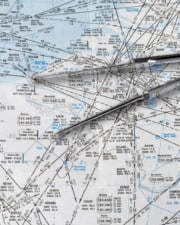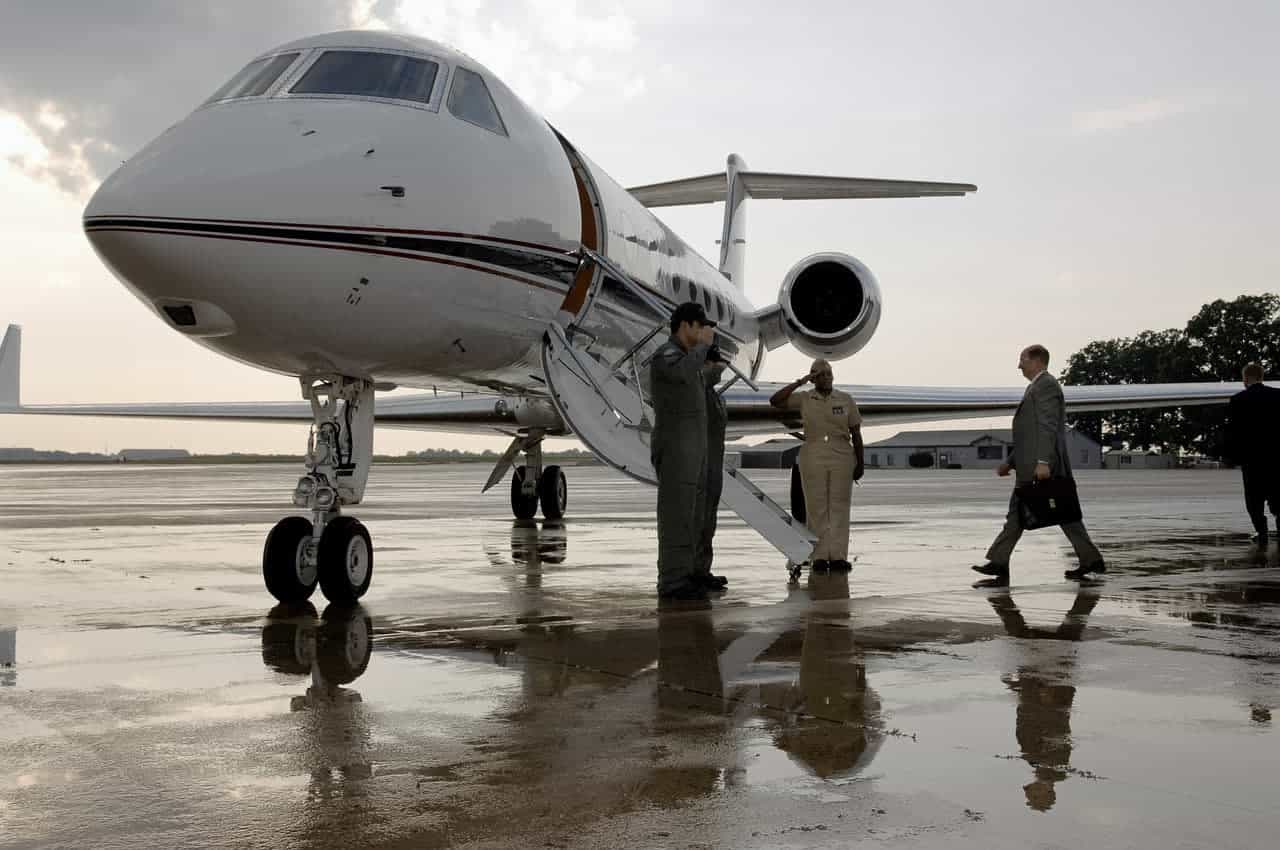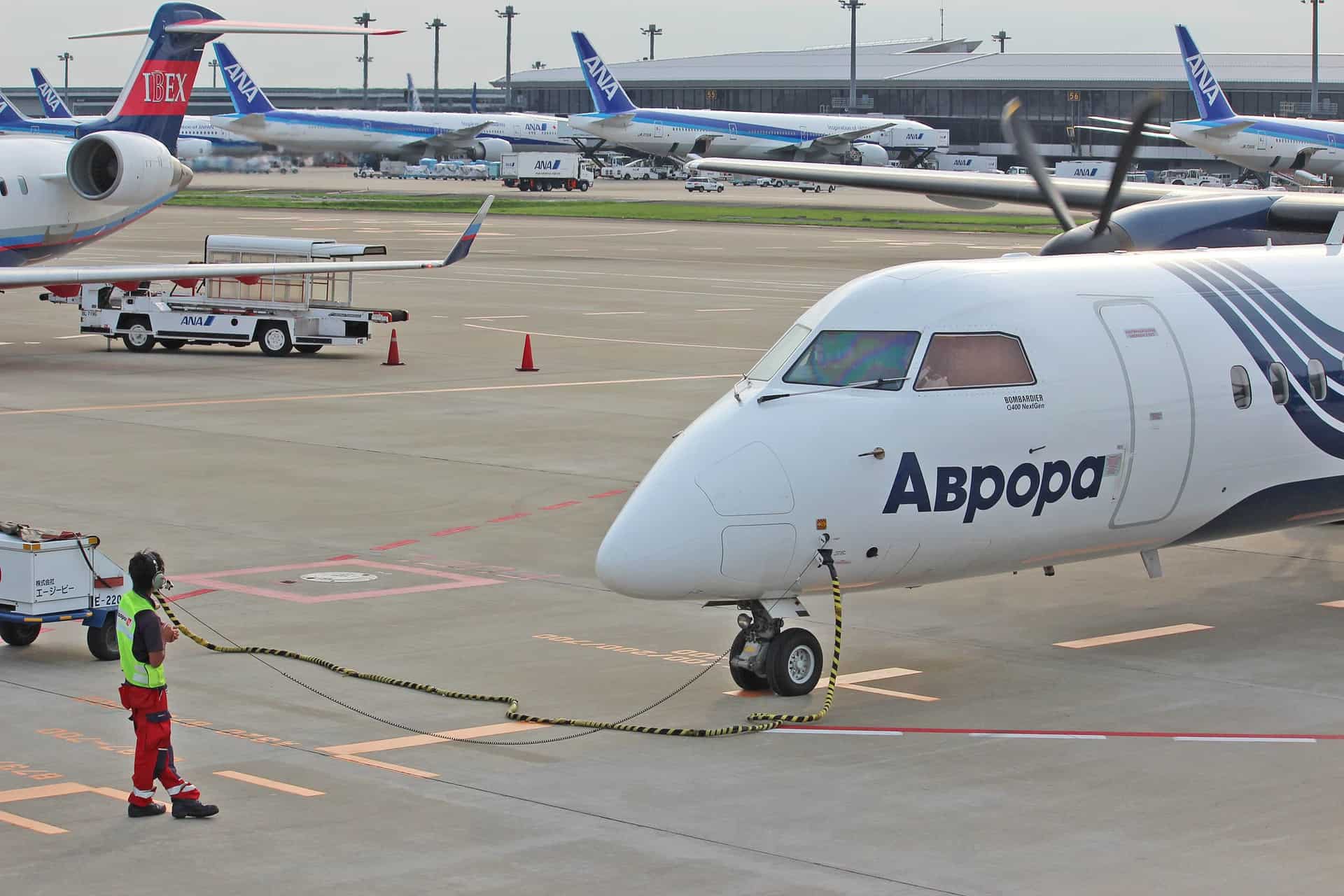“We have clearance, Clarence. Roger, Roger. What’s our vector, Victor?” You might be a pilot if you’ve heard that line from the 1980 movie Airplane! repeated a million times. Like all great laugh-out-loud lines, there’s some truth in the humor–pilots really do speak in their own language sometimes.
A vector in aviation is simply a direction that the plane should fly, expressed as a compass heading. If you are “receiving radar vectors” from air traffic control, they are simply telling you what heading to fly and when to turn to it.
Vectoring Definition
Some folks might remember vectors from high school physics class, where they described arrows representing the forces acting on an object. We use vectors in aviation the same way when describing how lift, thrust, drag, and weight act on an aircraft in flight.
According to Dictionary.com, in mathematics and science, a vector is a quantity representing both magnitude and direction as represented by an arrow.
The word-wise website also defines vector in aeronautics as a verb, meaning “to guide an aircraft in flight by issuing appropriate headings.”
Another way that the word vector is used in aviation is to describe things like “vectored thrust.” This is common in spacecraft or VTOL (vertical takeoff and landing) aircraft that can duct, or vector, their thrust in any direction to control their direction of flight.
To sum it up, the word vector can be thought of as moving something in a certain direction. So, when pilots talk about vectors, they mean the aircraft’s heading. For example, when receiving “radar vectors,” an air traffic controller issues the pilot a heading to fly.
How Do Pilots Use Vectors?
Pilots don’t think in terms of vectors as arrows, even though they are familiar with the term. Instead, pilots move their aircraft based on headings.
Headings are the direction that the plane is pointed when referencing the magnetic compass. The compass points north and is divided into 360 degrees. Therefore, north is 0, or 360. Proceeding clockwise, east is 090, south is 180, and west is 270 degrees.
When a pilot is assigned a vector, it comes in the form of the controller saying something like, “Speedbird 1 Heavy, fly heading zero-nine-zero (090).”
The FAA’s Instrument Flying Handbook defines vectoring simply as “navigational guidance by assigning headings.”

What are Radar Vectors in Aviation?
If you think about vectors in terms of those arrows from physics class, the easiest way to think about them applied to airplanes is from the air traffic controller’s perspective.
The controller looks at their radar scope and tries to organize how the aircraft move around in their airspace.
Some of those planes are flying preset routes like airways or instrument approaches.
But if a plane isn’t following a path on its own, the controller will need to tell it where to go. So instead of telling a pilot to “join Victor 99” (an airway), they might say, “fly heading 090.”
That’s called a radar vector. Vectors are headings in degrees based on the magnetic compass.
When you think about it, it’s basically the controller’s way of drawing an arrow on their radar scope in the direction and at the speed that they need the aircraft to move. So from the controller’s perspective, vectors really are arrows, even if they’re more or less imaginary.
According to the Aeronautical Informational Manual, a controller can issue vectors under three circumstances.
- For aircraft separation
- For noise abatement
- To obtain an operational advantage for the pilot or controller

What is a Vector Approach?
There are a few ways that pilots might use vectors they receive from air traffic control during a flight, but they could occur anytime on an IFR flight plan. For example, if the controller needs to divert a flight around another plane or weather, they will issue vectors.
Once a pilot accepts the vector, they must continue on that heading until they receive a different clearance. Often, a vector clearance will be something like, “Fly heading 120 to intercept the localizer inbound.”
That means the vector is being provided to set the pilot up for a localizer or ILS approach. Instead of flying an entire approach procedure from the initial approach fix (IAF), the controller provides radar vectors to intercept the approach just outside of the final approach fix (FAF).
This sort of approach is actually common since it enables controllers to more easily organize the flow of traffic onto an instrument approach and into an airport. Some approaches are even set up to only work this way, and their charts will have a note that reads “RADAR REQUIRED.”
Of course, it only works at airports with good radar coverage in controlled airspace!
What are ASR or PAR Approaches?
Finally, did you know that there are approaches that consist of nothing but vectors?
Airport Surveillance Radar (ASR) and Precision Approach Radar (PAR) approaches are based solely on radar. The controller provides vectors for heading and course to get the plane on the final approach course.
A PAR approach provides altitude and descent angle information, too. By providing constant updates to the pilot, the controller can guide a flight down to the runway with nothing but voice communications. Unfortunately, this only works in locations with a published ASR or PAR approach because it requires special radar equipment.
Related Posts














